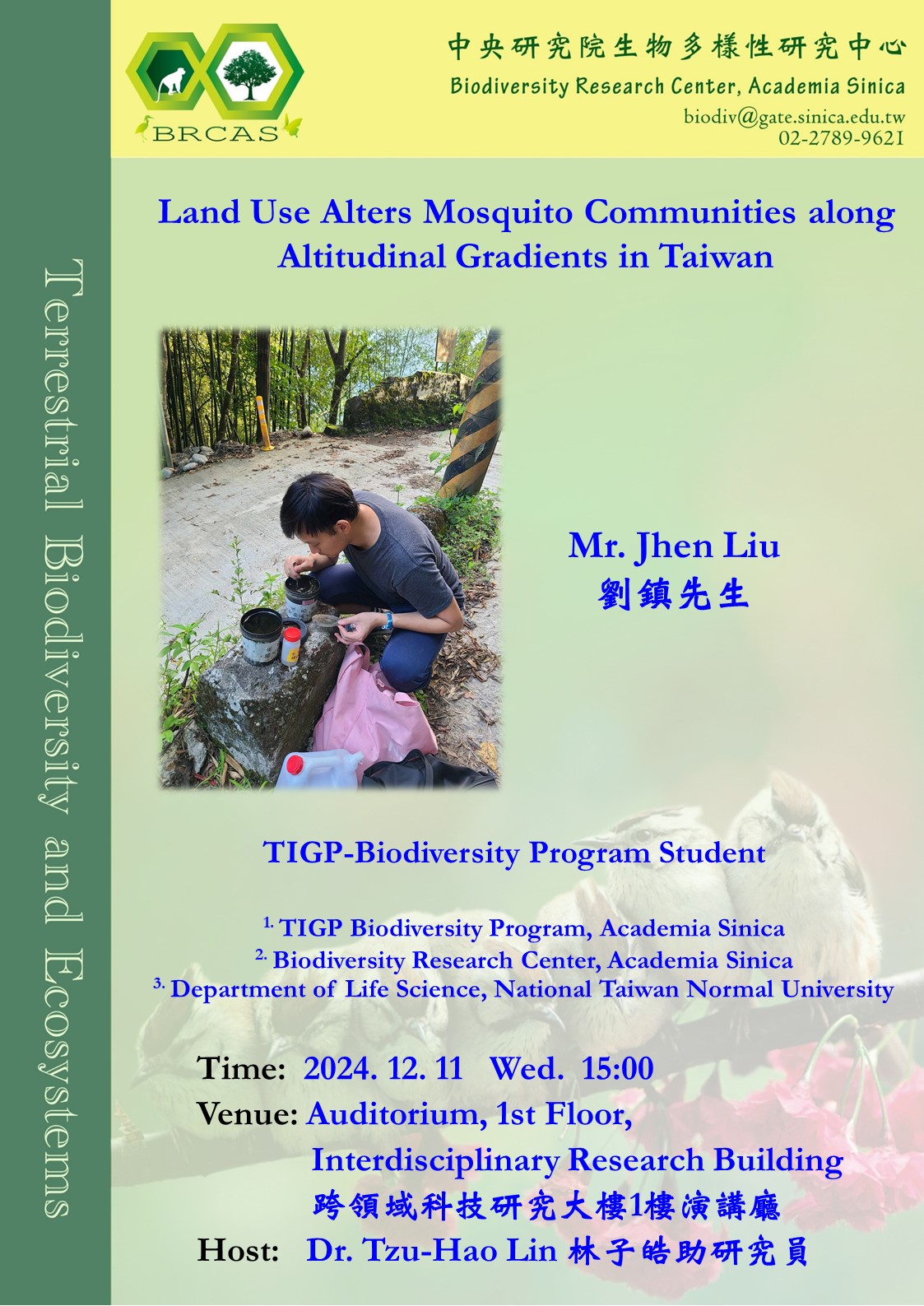- Lectures
- Biodiversity Research Center
- Location
Auditorium, 1st Floor, Interdisciplinary Research Building
- Speaker Name
Mr. Jhen Liu (TIGP, Academia Sinica)
- State
Definitive
- Url
Abstract
Abundance and species composition of mosquitoes change with elevation, but can also be affected by land use when abiotic (e.g., temperature) and biotic (e.g., number of predators) conditions are altered. In a world when a rapid change in land use may lead to the expansion and increase in the abundance of mosquitoes and therefore mosquito-borne diseases, a better understanding of how land use change reshapes mosquito communities along the altitudinal gradient is warranted. However, related studies remain very limited. Elevation and land use can affect mosquito community through a change in temperature (H1, hypothesis 1), resource (H2), or enemy (H3). We surveyed mosquitoes, water quality, and potential predators of mosquitoes every 50m along an elevational gradient (100m to 1,650m amsl) and covered various habitat types (wetland, urban area, rural village, mosaics of agriculture and secondary forests, and mature forest) in northern Taiwan. In addition, mosquitoes were sampled in three habitats (rural village, mosaics of agriculture and secondary forests, and mature forest) at three altitudes (300m, 600m and 1,200m amsl). Three sampling methods (ovitrap, hand-net sweeping, and CDC light trap) were applied to increase the number of mosquito species that can be collected. Species richness of mosquitoes was higher in wetlands and lower in mature forests. Mosquito communities changed with altitudes, but were modified by land use. Specifically, mosquito communities were more homogeneous in anthropogenic habitats, including urban area, rural villages, and mosaics of agriculture and secondary forests. Rural village and mosaics of agriculture and secondary forests increased the number of Aedes albopictus, which is the main vector of dengue virus in northern Taiwan. Natural enemies of mosquitoes, such as dragonflies (Lyiothemis flava) and predatory mosquitoes (Toxorhynchites spp. and Lutzia spp.) occurred at high-elevation sites and mature forest. Altitude and land use can both affect mosquito communities, but through distinct mechanisms. Diverse thermal niches and blood sources are available to mosquitoes along elevational gradients, whereas human land-use create habitats favored by anthropophilic mosquitoes. Moreover, not only temperature, but also resources and predators could influence abundance and species composition of mosquitoes.









 Home
Home

